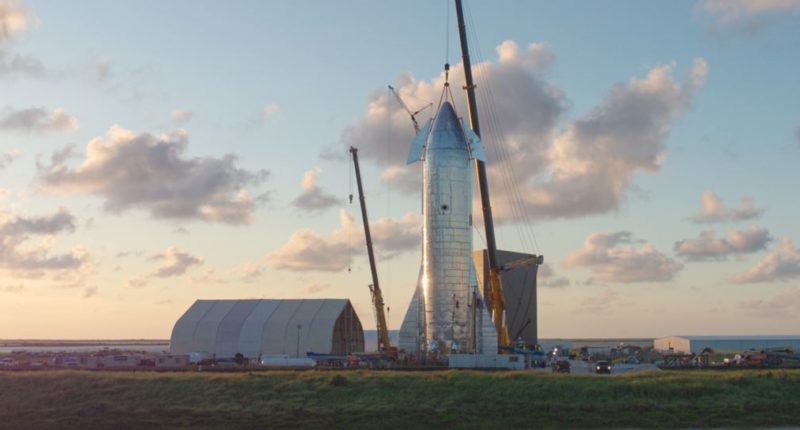In a highly anticipated event that took place at SpaceX’s Texas campus today, Elon Musk gave some massive new updates with respect to ‘Starship’ — the company’s ship that it plans to make humans interplanetary.
In the first — and perhaps the most important of all — update that Musk announced is the Starship’s surprisingly accelerated development timeline. According to Elon Musk, the Starship should be able to launch within the next months. In addition to that, there is a possibility that this ship could embark on a crewed mission, as early as next year.
Another important update relates to the details on how Starship would be using in-flight refueling in space, to ferry humans to other planets. Musk detailed that this refueling would be done by docking the crew-carrying Starship with tanker Starships already in orbit to transfer fuel. It is crucial for long, interplanetary journeys. This way, the spacecraft will carry just enough propellant on board to make sure it reaches the first tanker in time. This will thus allow much more space to carry the over 100 tons of cargo that Elon Musk plans to deliver to other celestial bodies. These will include supplies for building bases on planetary surfaces, as well as up to 100 passengers on long-haul planet-to-planet flights. Needless to add, these are very, very long terms goals. But then, one needs to be ambitious enough to be thinking of achieving a feat of this size.
In terms of updates for various Starship iterations, Musk talked about a new additiona to all current and future designs of the ship. The Mk1, Mk2 and the forthcoming Mk3 and Mk4 orbital testers will all feature a new fin design, primarily to make their re-entry into earth’s orbit smooth and stable. In Musk’s words, this fin will orient the vehicles so they can re-enter Earth’s atmosphere flat on their ‘bellies,’ coming in horizontal to increase drag and then reduce velocity before performing a sort of flip maneuver to swing past vertical. The vehicle will then pendulum back to vertical for touch-down. In a simulation of the same shown at the event, this all looked uber cool, and if achieved, could be far more efficient when compared to the landing process of the Falcon boosters that we have seen so far.
There were updates with respect to the Starship booster — the Super Heavy — as well. According to Musk, this will be a liquid-Oxygen powered booster, the size being 1.5 times the size of Starship itself. It will consist of 7 Raptor engines on board (the Starship will have only six) and will also feature six landing legs and deployable grid fins for its own return trip back to Earth.
Musk said that SpaceX will be “building both ships and boosters here [at Boca Chica] and a the Cape as fast as we can,” and that they’ve already been improving both the design and the manufacture of the sections for the spacecraft “exponentially” as a result of the competition.
In terms of timelines, Elon Musk said that SpaceX will build and fly Mk2 in two months, Mk3 in three months, Mk4 in four months and so on. Musk added that either Mk3 or Mk5 will be that orbital test, and that they want to be able to get that done in less than six months.
Musk has been chasing his Mars colonization ambitions with utmost speed, and the development timeline for Starship — if at all true — could be a milestone in those ambitions. Starship is crucial if humans ever have to make Mars settlement a reality. Space enthusiasts and even agencies globally, are looking up to Musk for humans’ ability to be interplanetary.
The Tech Portal is published by Blue Box Media Private Limited. Our investors have no influence over our reporting. Read our full Ownership and Funding Disclosure →







